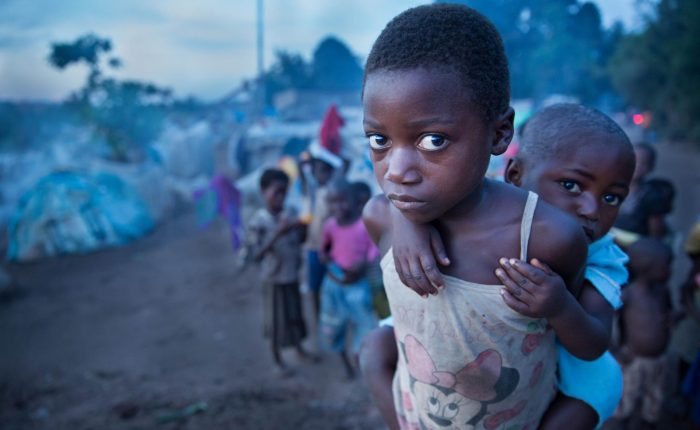By Munezero Grace
According to the Convention on the Rights of the child 1989, Article 1[1] defines a child to mean every human being below the age of eighteen years, under the law applicable to the child, majority is attained earlier.
It is unequivocal that children are part of the vulnerable group during an armed conflict. This is so because children have interests and rights that must be protected in a community. Looking at the case of Prosecutor V Moinina Fofana and Allieu Kondewa[2], it spells out some of the rights and interests of children that must be protected. The ICJ stated that the children soldiers are deprived of a family, education and all advantages that would otherwise help them prepare for adulthood and in the end they will suffer trauma. It is to note that such protection given to children was widely practiced in the African Countries. For instance, among the Fulani tribe in South Sudan, it was believed that attacking children would bring shame to the tribe. Rule 135 [3]of the CIHL provides that children affected by armed conflict are entitled to special respect and protect.
Protections given to children in an armed conflict include; protection of their education, culture, traditions and their nationality. According to Dennis Plattner in her paper, “Protection of Children in International Humanitarian Law,” explains that even such protection ought to be take place with no legal basis.
We see that the 4th Geneva convention of 1949 provides for the general protections of children in an armed conflict whereas Additional protocol I and II to the Geneva Conventions narrows down and specifies the protection of children in an armed conflict. Article 50(1) GC IV provides that the occupying power shall, with the co-operation of the national and local authorities, facilitate the proper working of all institutions devoted to the care and care of children. Article 94(2) provides that all possible facilities shall be granted to internees to continue their studies or to take up new subjects the education of children and young people shall be ensured; they shall be allowed to attend schools either within the place of internment or outside. The above can also be reflected under Article 4(3) of AP II, which contains an obligation to the high contracting parties to provide education including religious and moral education.
Focusing on the case study of the Syrian Conflict of 2011[4], the suppression of peaceful demonstrations led to the loss hundreds of thousands of civilians including children. It was indicated that 1356 school were targeted and therefore schools in Syria could not function as a protective learning environment because the education had been under deliberate attacks which worsened the situation of Syrian education during the conflict.
It was found that the Syrian regime and its allies had committed indiscriminate attacks on schools, students and teachers, in addition to the use of schools for military purpose as well as the recruitment of children without any respect to International Humanitarian Law.
It is to that children during the Second World War, children were taken away from their mothers to be provided with other parents and given another nationality. Therefore there developed an urge to protect the nationality of these children. Looking at Article 50(2) of GC IV, it provides that the occupying power shall take all necessary steps to facilitate the identification of children and registration of their parentage.
International Humanitarian Law prohibits the recruitment of child soldiers into armed groups not until they have attained a majority age. Therefore this rests an obligation on the parties to the conflict to take all feasible measures in order that children who have not attained the age of 15 years do not take part in direct hostilities as well as recruiting them into their armed forces. This is affirmed under Article 77(2) of AP I to the Geneva Convention. In Prosecutor v Moinina Fofana and Allieu kondewa, Fofana and Allieu[5] were convicted of enlisting children under the age of 15 years into armed forces or groups using them to participate in hostilities.
However, the law on the protection of children in an armed conflict is inadequate. This poses a question, why such law is inadequate putting in consideration the aspect of vulnerability. In my perspective, such law is inadequate simply because there has not been any enforceability of the law on the protection of children. It is witnessed more often in Non- International armed conflicts. For instance, the Lords Resistance Movement (LRA) is known for its widespread conscription of children. These children are indoctrinated with different ideologies. How is this done? Children are promised material gains such as rewards, giving them food At times we see that these children consent to joining these armed groups for survival as well as their safety during the armed conflicts. In as much as the Law on the protection of children during an armed conflict has proved to be inadequate, looking at the brighter side of recruitment of children in armed groups, it is considered as an achievement following the expansion of these armed groups as well as their activities. In an armed conflict, the recruitment of child soldiers in armed forces deprives children of protections offered by International Humanitarian Law. Therefore, the protection of children’s interests, such as education, nationality must be given consideration simply because when such interests are ignored, it results in destructive and violent growth trends among children.
[1] The Convention on the Rights of the Child 1989.
[2] (Appeal Judgment), SCSL-04-14-A, Special Court for Sierra Leone, 28 May 2008, para 22.
[3] Customary International Humanitarian Law.
[4] The armed conflict in Syria, 2011.
[5] (Appeal Judgment), SCSL-04-14-A, Special Court for Sierra Leone, 28 May 2008, para 15.

